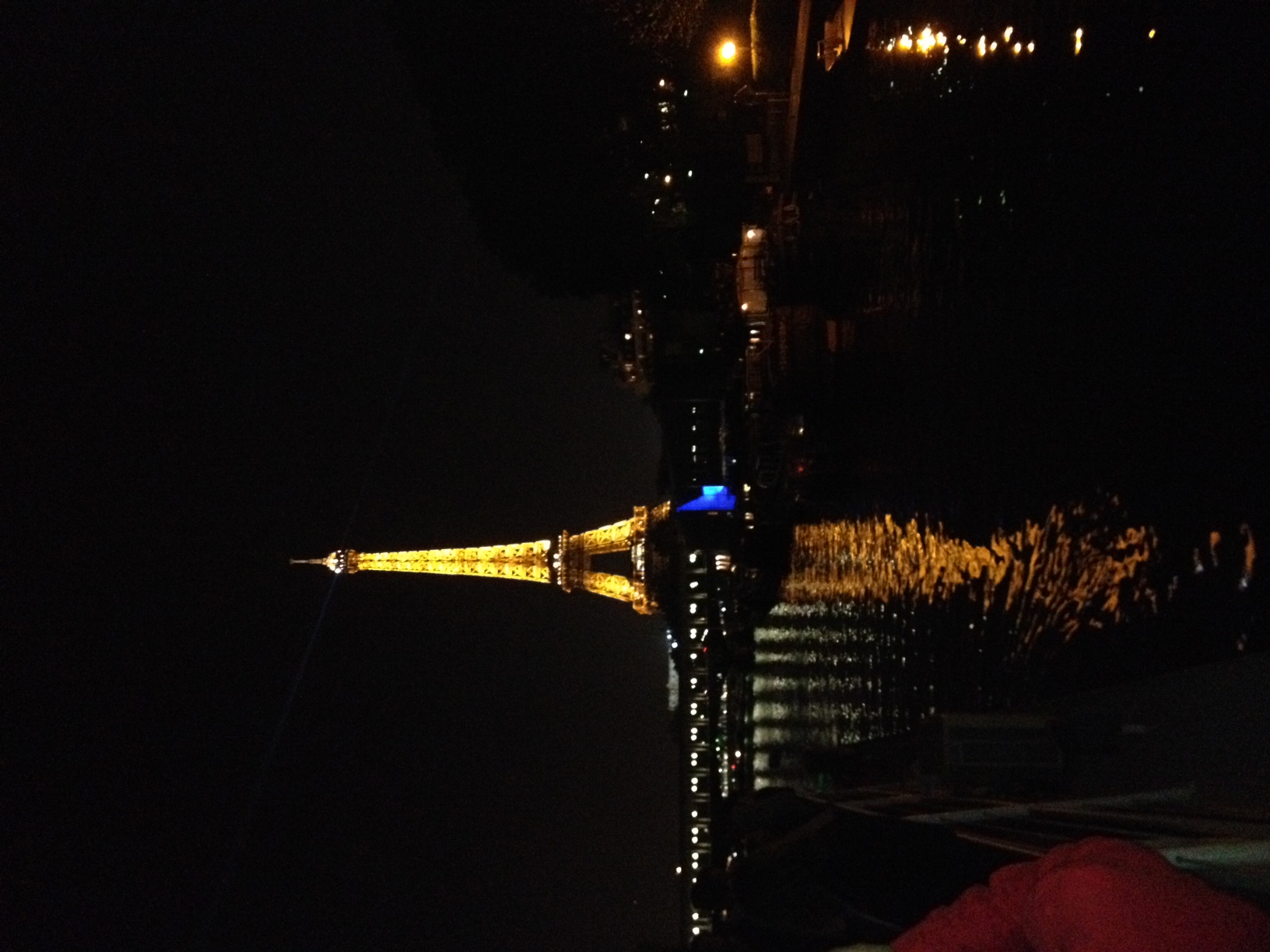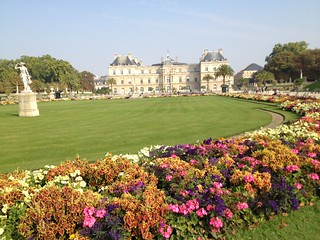I recently returned from a week in Paris in which I attended a great meeting hosted by the French Society for Cell Biology (SBCF) called “Building the Cell,” at the Pasteur Institute and from another seminar invitation at the Curie Institute.

The Parisian icon made from immunostained HeLa cells plated on fibronectin served as the logo for the meeting.
and from another seminar invitation at the Curie Institute. While I have had the opportunity to visit a number of European cities and towns as part of my work-related travel, this was my first time in Paris – and I enjoyed it immensely.
Will the real Eiffel Tower please stand up?
I could not, however, help noticing the very limited number of non-European attendees at the meeting. On the other hand, Europeans (and Asians) appear to frequent the US for scientific meetings. While it is obvious to me that financial considerations play a key role in whether researchers from the US will attend a meeting abroad, I believe that this is only a minor reason for the low US participation in the meeting. I may be cursed for saying this, but I suspect that many American scientists (despite the fact that a fair percentage are not US-born!) do not like being outside their comfort zones.
Jardin du Luxembourg on a beautiful day
What do I mean? Not jet-lag, but the homogenous comfort that travel within the US typically provides: hotel rooms are very standard, mostly chains, and one would find the same Hilton/Sheraton/Doubletree/Ramada/Holiday Inn/Add-your-chain-here in any US city, and from the inside, it would be difficult to know where in the US one is located. Hotels in Europe typically sport very small rooms and narrow beds by comparison, perhaps resulting from limited/expensive space, and/or perhaps dictated by the beautiful but old existing buildings.
Food. The food in France is a treat – or it was for me. Perhaps a teetotaler vegetarian might heartily disagree. But the baguettes and breads are terrific, the appetizers are so enticingly prepared, that I couldn’t help thinking that although the actual food couldn’t be more different, it reminded me of the superb Japanese sense of aesthetics in maki rolls and sushi. But I suspect that many Americans are used to their standard fare restaurants.
The language. I broke my teeth trying in vain to recall my high school French. I opened my talk with a weak attempt to thank the organizers for inviting me in French. That probably took up a quarter of the 15 minutes I was given – but I did try. I also tried to engage a cab driver in chit-chat, and asked him how he liked the Prius he was driving, and told him I had one. He answered in English… But here again, I suspect that many Americans – where learning foreign languages is not a high priority – may feel uncomfortable not always being able to say and/or get exactly what they want.
Of course, it’s probably a lot more complicated than that, and time zones, passports, expense and other reasons likely are important factors as well. But given the tremendous concentration of outstanding French researchers in membrane trafficking and cell biology in the Paris area (perhaps even more so than any one location in the US), I am delighted that I had an opportunity to attend. It was great to visit such a great city with so many wonderful historical landmarks. It was also an honor to present my own research at two such distinguished institutions in Paris. I hope the “Building the Cell will become an annual event and that I will have many additional opportunities to visit Paris and France.
Moi, at the Musee d’Orsay, Paris




thanks for visiting my old country. Please come back whenever you like.
I definitely plan on it!
Hi Steve. I organised a meeting last month in Aix-en-Provence, and just as you describe for your Paris meeting, there were relatively few US scientists present, though many appeared from other far flung parts including South America, Australia and China. It’s hard to say what deters US scientists, since those who did come adored the conference and the local culture. Perhaps the abundance of good meetings in the US means there isn’t any real need to venture further afield, and perhaps limited travel budgets also have an impact.
Maybe next time you organize a meeting at such a wonderful location you can “annexin” me to the field so I can join you?!